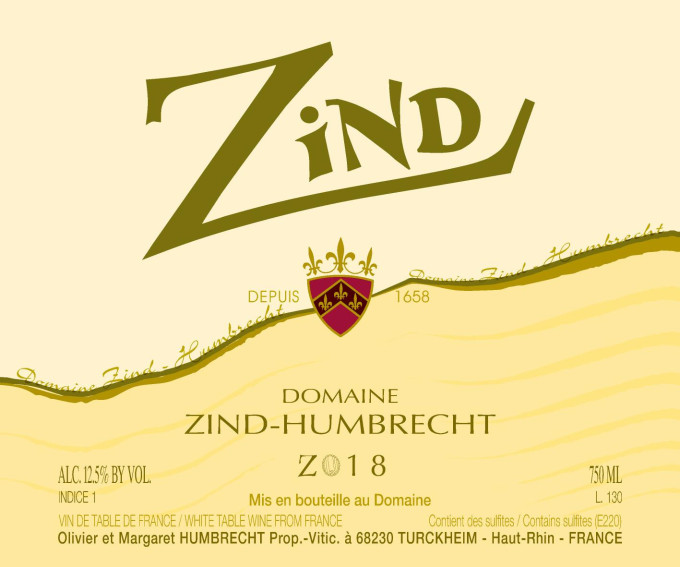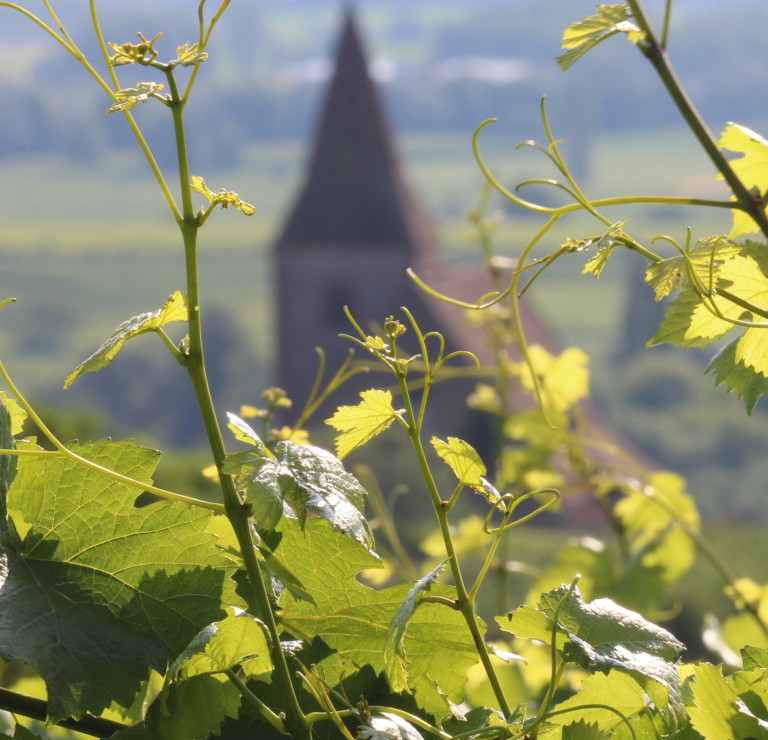
Technical presentation
| Bottling : | January 2020 |
|---|---|
| Acquired alcohol : | 12,7° |
| Residual sugar : | 3.3 g/l |
| Total acidity : | 3.3 g/l H2SO4 (5.1 g/l Acide Tartrique) |
| pH : | 3.2 |
| Yield : | 68 hl/ha |
| Optimum tasting : | 2022-2030 |
| Average age of vines : | 29 years |
| Terroir : | Clos Windsbuhl |
| Sweetness index : | 1 |
| Soil : | Muschelkalk calcareous |
Description of the wine Zind 2018
The Zind is classified as Vin de France (table wine) because it contains about 70% Chardonnay, blended with Auxerrois, which is not an allowed grape in AOP Alsace. My father Leonard Humbrecht chose to plant this grape on the coolest part of the Clos Windsbuhl, nearing the forest, because it has the ability to keep great structure and acidity, enhanced by the rocky limestone soil. A small amount of Auxerrois allows to create the perfect balance. Windsbuhl produces elegant style wines, mostly characterized by a lacy and acidity driven structure. In 2018, these grapes performed superbly and made a wine that became dry after a very long fermentation, another characteristic from this vineyard.

Tasting notes
04/2020 : Clear pale yellow colour. The nose shows the strong muschelkalk influence: rocky, lean, still partially closed with some smoky influence. With aeration in a carafe, which is strongly recommended, the nose opens up beautifully and shows more white fruits and citrus aromas, again a signature often found in this vineyard. The palate shows superb aromatics, is vivacious, dry, with a sapid/juicy texture. The finish shows a salivating touch from a ripe acidity. This wine is alive and shows lots of energy and a perfect harmony.

The Clos Windsbuhl of Hunawihr
The altitude of the vineyard coupled with Hunawihr’s tardy climate means that the Clos Windsbuhl is often one of the last of our vineyards to be harvested. This explains the aromatic quality of the Clos’ wines and the consistent balance of acidity, a guarantee of good ageing. Although often harvested late, the Windsbuhl grapes are only rarely botryitized, doubtless due to the altitude of the vineyard, but nevertheless often reach high levels of maturity.